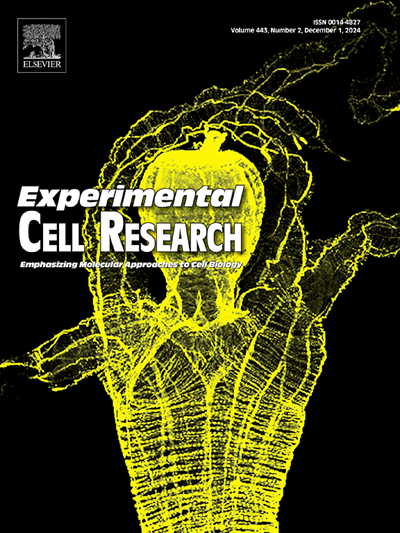Modeling amyotrophic lateral sclerosis with amniotic membrane-derived mesenchymal stem cells: A novel approach for disease modeling
IF 3.3
3区 生物学
Q3 CELL BIOLOGY
引用次数: 0
Abstract
Advancement of therapeutics for neurodegenerative diseases like amyotrophic lateral sclerosis (ALS) has been predominantly hampered by the dearth of relevant disease models. Despite numerous animal models, significant challenges remain in correlating these with human disease complexities. In this study, the ALS model was created using amniotic membrane-derived mesenchymal stem cells (AM-MSCs) which were differentiated into motor neurons (MN) with specific MN induction media and transiently transfected with mutated human SOD1 G93A plasmid to induce ALS-like condition. Characterization included gene expression analysis, immunocytochemistry, flow cytometry, and Western blot. Functional assays assessed the extent of degeneration and model efficiency. AM-MSCs demonstrated multipotency and were positive for MSC markers. Upon differentiation, the expression of MN markers like MNX1, Olig2, and ChAT were found to be elevated. SOD1 G93A overexpression, downregulated MN markers, upregulated NURR1 gene, reduced acetylcholine (ACh), reduced glutathione, and elevated oxidative stress markers. This robust in-vitro ALS model derived from AM-MSCs offers an alternative to animal models to provide an efficient and cost-effective platform to conduct rapid drug screening.
求助全文
约1分钟内获得全文
求助全文
来源期刊

Experimental cell research
医学-细胞生物学
CiteScore
7.20
自引率
0.00%
发文量
295
审稿时长
30 days
期刊介绍:
Our scope includes but is not limited to areas such as: Chromosome biology; Chromatin and epigenetics; DNA repair; Gene regulation; Nuclear import-export; RNA processing; Non-coding RNAs; Organelle biology; The cytoskeleton; Intracellular trafficking; Cell-cell and cell-matrix interactions; Cell motility and migration; Cell proliferation; Cellular differentiation; Signal transduction; Programmed cell death.
 求助内容:
求助内容: 应助结果提醒方式:
应助结果提醒方式:


